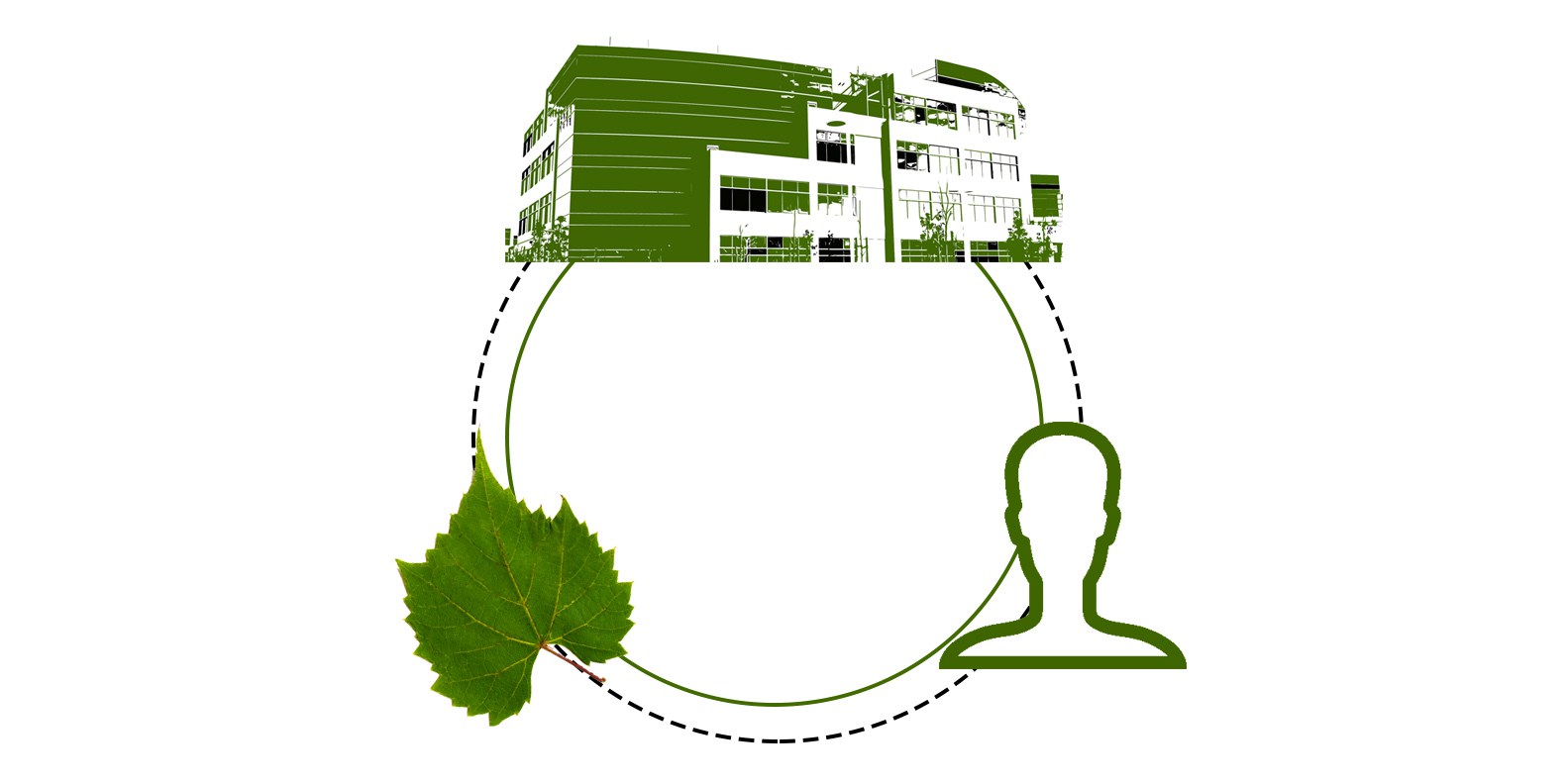
Green, the iconic color of money, growth, and the environment. It’s also the symbol for sustainability in buildings. The benefits of having a green building manifest in three main areas:
- Occupants: a healthier and more comfortable working space.
- Environment: reduced resource depletion and higher sustainability, which helps preserve the earth for future generations.
- Business: higher employee productivity, lower energy and life cycle costs, higher client attraction/retention, higher resale value, and enhanced public relations.
Beyond Energy Efficiency
A building’s energy efficiency is ENERGY STAR’s objective, and self-generating as much energy as a building uses is the objective of Net Zero Energy Building Certification. For this reason, many people mentally equate green buildings with energy savings, but reducing energy use is only one critically important aspect of sustainability. There are many levels and different aspects that lend themselves to making a building green.
Being green is more comprehensive than just saving some energy. Green buildings (compared to traditional buildings) have reduced environmental footprints while enhancing the indoor environmental quality (IEQ) for the occupants. Green means getting more with less; more quality of life for building occupants while using less planetary resources.
For example, the U.S. Green Building Council (USGBC) LEED v4 for Building Design and Construction certification includes multiple categories and many factors:
- Location and Transportation rewards better site location and smart transportation choices.
- Sustainable Sites discourages development on previously undeveloped land and seeks to minimize a building’s impact on ecosystems and waterways, to encourage regionally appropriate landscaping, to control storm water runoff, and to reduce erosion, light pollution, the heat island effect, and construction-related pollution.
- Water Efficiency reduced water usage, typically achieved through more efficient appliances, fixtures, and fittings inside and through water-wise landscaping outside.
- Energy & Atmosphere encourages a wide variety of energy strategies: commissioning, energy use monitoring, efficient design and construction, the use of renewable and clean sources of energy (generated on-site or off-site), as well as efficient appliances, systems, and lighting.
- Materials & Resources encourages the selection of sustainable grown, harvested, produced, and transported products and materials. It encourages the use of locally sourced materials to reduce transportation costs. It promotes the reduction of waste as well as reuse and recycling, and it takes into account the reduction of waste at a product’s source.
- Indoor Environmental Quality promotes strategies that can improve indoor air (where people average 90% of their day), provide access to natural daylight and views, and optimize acoustics.
The significant goals for greener buildings of reducing energy and water usage while enhancing the quality of indoor air constitute the majority of credits in the LEED system. These goals and credits are attainable, to a large degree, by optimizing the building’s automation system.
 Cart
Cart